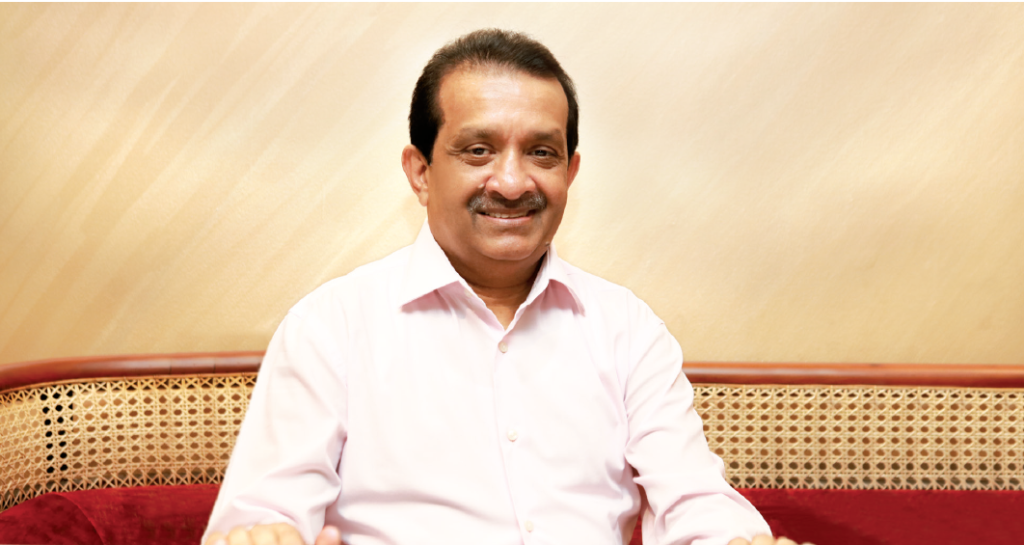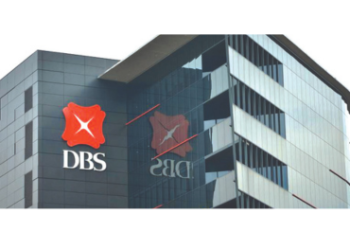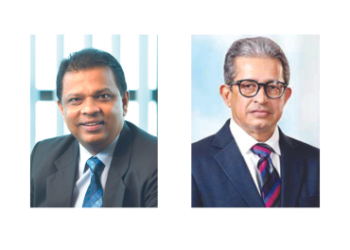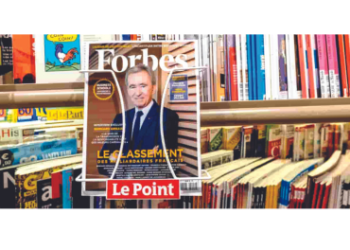Very few may know the story of Dinemore, one of the most popular semi-fast food restaurants in Sri Lanka, entirely home-grown with a global footprint. Very few may know that one man’s ambition to start his restaurant spurred the eating-out culture in Sri Lanka and saw the ‘submarine’ finally land on our plates. When M S M Rishard started Dinemore in 1997, he had a mission to serve the entire country, every Sri Lankan, provide the space for shared company and conversations, meet friends, and enjoy cheerful night outs. His long and untiring journey of 27 years ago is inspiring. The hands-on leader and multi-tasker who led from the front, cooked, served, and opened the door to patrons knew the ropes of his business inside and out. Speaking with Business Today, he described his journey to success, his constant desire to learn and grow, investing in quality and giving value for money, his desire for every Sri Lankan to savor the pleasure of dining out, and how his business has become a valuable entity contributing to the country’s reserves and generating employment by prioritizing its investment decisions for maximum gains and sustainability.
Words Jennifer Paldano Goonewardane.
Photography Sujith Heenatigala and Dinesh Fernando.
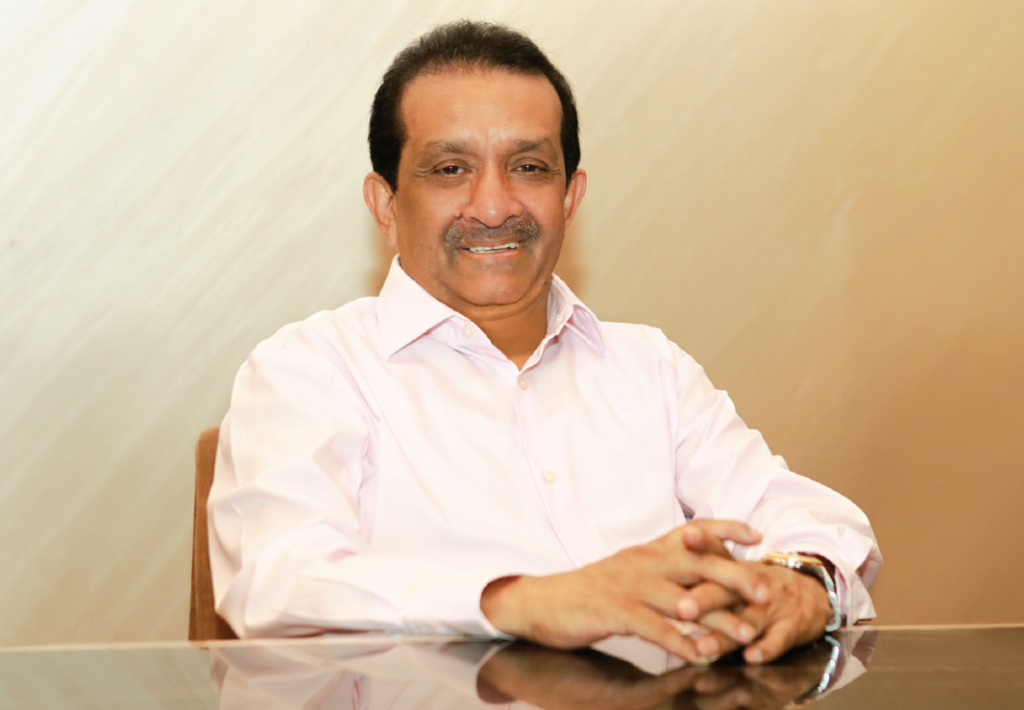
M S M Rishard, Founder of Dinemore.
Can you tell us the Dinemore story?
At 22, I started from a junior position for a star-rated hotel in the Middle East. As a young man, I had a dream. I dreamt of opening a restaurant of mine within eight years. I set out to realize my vision as a young man by embarking on a learning journey. Hence, rather than confine myself to waiting at tables, I would go into the kitchen to learn cooking and its operational aspects. As an aspiring restauranteur, I should possess cooking skills. The turning point came when I joined Shakey’s Pizza, an American pizza restaurant chain. It was a fantastic learning opportunity. Even today, the American fast-food industry is unmatched and the best in the world. They have a very different approach to management and operations. Shakey’s describes their staff as the crew rather than employees who receive training in restaurant management, from kitchen operations to administration.
The American fast food industry hires mostly school leavers willing to learn and moldable without much resistance. Remarkably, the American fast food industry doesn’t compartmentalize their staff into specialists, such as a separate staff to operate the kitchen, who would only know working within the confines of the kitchen. Instead, they hire a team whose members receive training in the kitchen, in cleaning, cashiering, and service delivery, thereby ensuring that skills and expertise do not belong to specific groups. That way, no crew member becomes indispensable. Shakey’s Pizza hired me as a 24-year-old and put me through an all-encompassing comprehensive training regimen, from work in the kitchen to cleaning the toilets to handling administration. Eventually, I became a trainer of new crew members.
Upon returning to Sri Lanka, I realized that eating out was the privilege of a few. The restaurants were also few, so one would find the same group of people patronizing the few restaurants in town. A sizeable social segment could not afford to eat at those restaurants. It was an eating-out culture that barred honorable working-class people from enjoying the experience of dining out. I wanted to introduce a new eating-out culture that would attract every segment of society where they can enjoy good food at reasonable prices.
I opened the first Dinemore restaurant in Dharmapala Mawatha with seven people. I trained the crew and worked in the kitchen for one year while I had no qualms about cleaning the toilet. I had to lead by example because those were days when a server would quit if we asked to clean the bathroom. I opened the door to customers and served while working in the kitchen. I was a hands-on restaurateur when I launched Dinemore and introduced the American fast-food work culture into my business. The secret to business success and sustainability rests on how far we are willing to go beyond our assigned roles. I introduced a different work culture into my first restaurant, which has pervaded the entire company with our expansion in Colombo and the suburbs.
I built Dinemore like a bird’s nest. It was a dream and a long-term plan for which I laid the foundation as a young employee in the Middle East. Part of my salary went into purchasing restaurant equipment from the secondhand market, which I brought to Sri Lanka every time I came on holiday. Hence, I saved on investing in equipment as I had already collected high-quality gear. I believe in starting small and tell all aspiring restauranteurs to start small with what they know. When you start small, overheads are low. My electricity bill was only ten thousand rupees in 1997, and the rent was twenty thousand. When you launch, you must do so within your means rather than invest in elaborate plans.
We are a distinct restaurant that delivers on its promise of value for money, which has been the core of our success. My family is another reason for my success. All my siblings are involved in the business. My three brothers are partners, and my son is a director today. The women in the family are also essential contributors, as my sisters and their daughters prepare our range of desserts.
How did you sell your concept?
When I launched my first Dinemore restaurant, I didn’t take out a single advertisement. I put up a bright board in a somewhat lonely street in Colombo amid an ongoing war in Sri Lanka. Many at that time had doubts about the location. In 1997, there were hardly any buildings on a sparsely lit street, but there was ample parking. But I was confident as we offered a fresh concept. Innovation works.
We introduced the submarine sandwich to Sri Lanka and sold four submarines on the first day. Business picked up slowly as more customers began to patronize, and we had a packed house at the end of six months, leading to a queue. This trend continued, and once I consolidated the business, I opened a second outlet at Flower Road after four years. Today, I am confident that I can open a Dinemore restaurant even every six months, but we are cautious given the constraints of finding adequate skills.
When I started Dinemore, the war was intense. There were explosions all over Colombo, and in those bleak days, I realized that people would want to enjoy outdoor eating with value for money. We started with a simple menu of submarine sandwiches and biryani. The submarine was 85 rupees, and the biryani was 90 in 1997. The novelty was the salad bar, which caught up fast. We also had a few Indian delicacies like naan, which we continue serving today. I decided on the menu and set the recipes. I made the food for the pictures displayed in the restaurant. It sent a message to my team that their boss knows the job. While our offering was fresh, we also served rice and curry, which we still do. Serving the Sri Lankan palate and their needs is vital because, in every crisis, Sri Lankans have ensured our sustainability by continuing their loyalty to us. Hence, we always serve their requirements.
Ten days after opening, I received my first big order for a hundred biryani packs. I accepted the order gladly as it was a big win for me as a newcomer, but the chef refused to deliver the order, telling me that I should have first asked him before accepting. I got to work, put on the apron, and began cooking myself with the help of the other staff, and as promised, we delivered a hundred packs on time. Had I refused the order at the behest of the chef, the rest of the crew would have followed the same example in the future. I set a standard and a precedent by getting down to doing the job myself. I could rise to the occasion because I learned to cook in addition to the excellent training I had received with the American fast food chain. It would be wise to open a restaurant if one knows the overall operational dynamics; otherwise, you become too dependent on specific skills.
My restaurants are open to everyone, irrespective of their job and social standing. Every customer from every walk of life is valuable to us, and I am glad that I spurred a new culture that has pervaded Sri Lanka today.
The secret to my success as an employee was my willingness to learn and to work past my stipulated working hours to know all the operational aspects of a restaurant business.
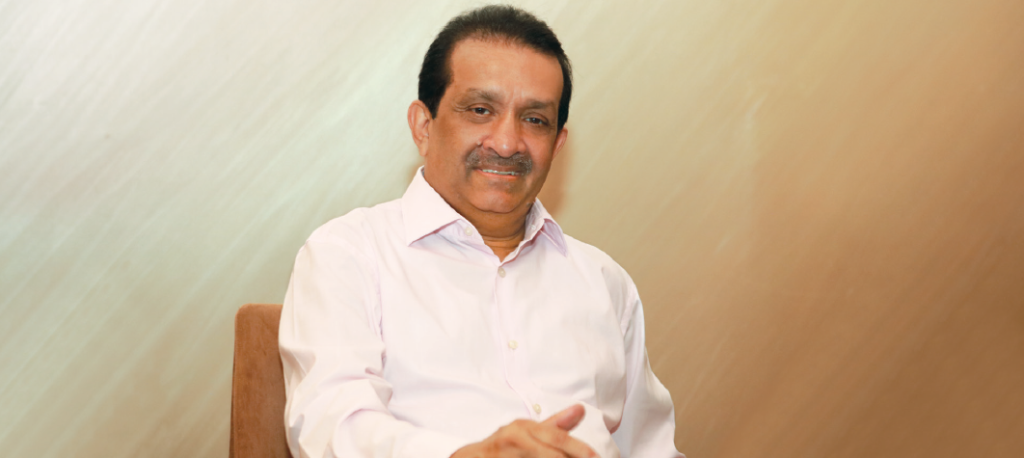
So, you are a boss who leads by example?
I was the youngest operations manager for Shakey’s Pizza. Their training was such that we had to clean the toilets if the staff was busy. That culture does not exist in Sri Lanka, but because I am willing to do it in my restaurants, the rest of the staff will immediately respond and do it themselves. People consider such tasks as menial and below their dignity. I am also very quick at food preparation, as time-saving greatly ensures service delivery and cost-cutting.
The secret to my success as an employee was my willingness to learn and to work past my stipulated working hours to know all the operational aspects of a restaurant business. And as an entrepreneur, it was to see opportunity where others’ see risks and putting honesty and integrity above everything else. I am grateful for the well-rounded training I received from the American fast food chain. If not for their excellent systems, how would fast food chain Shakeys sell Italian Pizza so successfully? They had a perfect marketing manual outlining multiple marketing strategies for selling their products, from discounts to offers aimed at various segments. It was a universe of marketing strategies. They showed that marketing is about practical action beyond the books, and that’s the key to their success. But when I launched, Sri Lanka was an untapped market, so there wasn’t much I had to do to attract customers. As I said, I lead by example by working hard and undertaking any task that demands completion.
In 1997, what was the emphasis on restaurant design when there was hardly a discourse on creating customer experiences in Sri Lanka?
By the time I was ready to launch Dinemore, I had seen and learned much about what a modern restaurant entails. Thanks to my experience in the Middle East, it was easy to replicate them here. As I said earlier, I had already collected US-manufactured equipment from the Middle East. My dream of setting up a restaurant in eight years finally came to fruition after twelve years. Our location hunting stopped at a 7.2 perch property in Dharmapala Mawatha. Although it was a small area, the advantage was that it was empty, giving us the freedom to design according to our requirements.
We leased the property for 10,000 rupees. Apart from designing the restaurant’s interior, I knew the impact of eye-catching signage on attracting and appealing to customers. The flex board used to make the first signage outside our first outlet was brought from the Middle East as it was unavailable in Sri Lanka. It was utterly conspicuous at night, designed in a prominent red and surrounded by lighting. In addition, we refabricated the sofas and other furniture I had brought from the Middle East. By creating a building of our choice within our budget while working with limited staff and incurring moderate rentals and overheads, we could open and operate with modest sales because we had invested prudently. Had we financed lavishly, we would have had to set high sales targets, which would have been impossible for a new product range. Sales build up only gradually with repeat customers. Investing all your money into a new venture would be a disaster. I didn’t have much money, so I started small.
Initially, the first outlet catered to 40, gradually expanding to accommodate 50 patrons and then 65. We were the first restaurant in the capital to remain open till one in the morning, catering to a segment looking to eat out in a decent, affordable place past midnight but could only find a few wayside hangouts. Remember, we launched during a precarious time and still succeeded in growing and expanding. So, if we grow through difficult times, we can thrive in good times. What held me in good stead was my confidence.
What can you tell us about your staff?
I trained the first team that joined Dinemore in 1997. Today, we hire external resource persons to help them improve their language and deportment. Despite the best training, employee turnover has been high, which we can expect as circumstances change. Still, I have 40 staff members who have remained with me since the beginning, half of whom are serving in our Maldives outlets.
I firmly tell my staff to maintain the utmost quality at all times. Compromising on ingredients is banned because the moment you compromise on the quality of ingredients, it bears upon the final product. We continuously invest in the best and serve generous portions.
Since you mentioned staff turnover, how do you address it?
Provide continuous training. Hire young people who are open to learning. I don’t blame people for leaving local jobs in favor of better-paying overseas employment, as domestic salaries cannot sustain them. On the other hand, it will be good to see our standards improve, such as the work commitment that my generation had and the willingness to sacrifice to learn and grow.
How has your menu evolved over the years?
Dinemore came up as a different option from the rest of the restaurants at the time, mainly serving Chinese food. We offered patrons from all walks of life value for money. We gave them a choice according to their purchasing power. Our generous portions can be shared, which makes it affordable. Some people suggest changing the submarine sandwich because we have served the same since inception. But why would I want to replace something that sells well? Look at some of the world’s leading fast-food brands. For instance, a global brand specializing in burgers will keep their burgers the same because that is their area of specialization. Likewise, I want to be a specialist in submarine sandwiches. We could expand our menu but can’t replace our good old sub with a new taste. Fast food and semi-fast food businesses thrive on specializations. We become synonymous with the menu and specific submarine sandwiches or burgers. People come especially for them, and for us, for 27 years, we have been successfully selling our good old submarine sandwiches to many customers, of whom a majority are repeat loyal customers.
Within four years of your first restaurant, you set up the second. How do you choose your locations?
Business expansion was always on my mind from day one. Today, we have 18 outlets, 13 in Sri Lanka and five in the Maldives. I have 110 Sri Lankans working in our Maldivian outlets, while 390 work in our Sri Lankan outlets. I often act on my instincts when I make a business decision. After more than two decades in business, we are a household name in Sri Lanka and have established a specific benchmark that people appreciate—a trust of serving value for money and the ability to attract many segments of society. I deliberately chose the fifth floor to set up an outlet at the One Galle Face mall to provide a different experience with a great view instead of talking about the food court. After all, we are a semi-fast food restaurant, a fact that people aren’t aware of. And from the first day, the OGF outlet has been thriving. While competition is healthy, my philosophy is to focus on what we are doing and how best to do it. Rather than focusing on competing with others in the same space, we strive to do our best and consistently maintain standards. We expand our menu only to suit customer requirements.
How vibrant is Sri Lanka’s food landscape?
It is still an untapped market. The potential is so high that we can harness tremendous benefits if we do it right. The problem is that many who venture into this business need to learn how to set about it. Many need to make better business decisions. For instance investing prudently on infrastructure and staff. Affordability with quality is critical to sustainability, which is valid worldwide. Good food and value for money is the secret. I knew the job and the recipes were mine, so naturally, I didn’t have to depend on anyone, like when I received the first biryani order for a hundred packs.
I am happy Sri Lanka has woken up to the dining-out culture, even though it has been gradual. As I have opened my latest and most plush outlet on Marine Drive, I want to see the rest of the street flooded with more restaurants. I love the competition it would spur because it is in competing that we achieve quality. In making Marine Drive a food street, the entire vicinity will become popular and populated with patrons. Competition is healthy to birth a vibrant dining-out culture in Sri Lanka.
When the lockdowns got extended, I intervened with authorities, warning them of the danger of halting businesses for too long because had we gone on without operating our business, we would have had to close down. We had 14 outlets and had to meet the cost of maintaining them, the rentals, and other expenses in addition to 13 staff houses, two warehouses, and one office. We received a few concessions from the property owners. Since we had bikes, I approached the authorities seeking permission to begin delivering food with an assurance of adhering to the highest safety standards. When we got the green light to provide food in Colombo, we couldn’t get the staff to return as their parents weren’t allowing them to leave. I got down to action and opened the Thurston Road outlet to prepare food with the help of loyal workers, my brothers and my son, which we delivered to Colombo with the help of ten loyal staff members. As business picked up, we managed to meet the cost of rentals and salaries hindered by the lack of business. Once we showed the way, other fast-food restaurants followed suit. We took the lead and set an example that nothing is impossible. Therefore, the lesson is that nothing is impossible. We can transform the eating-out culture in Sri Lanka into a vibrant marketplace, having weathered so many events in the recent past. We have survived through them all.
How are you taking advantage of the tourism industry boom? Are you reaping the benefits of its revival?
Dinemore has grown with Sri Lankans. When I started Dinemore during a very uncertain period in the country, it grew and has become what it is today thanks to the locals who patronized it and remained loyal to the brand. I have not depended on foreign customers for survival. Sri Lankans have always been my faithful customers, whereas tourists will drop by randomly. Sri Lankans patronize our outlets in large numbers, as families, extended families, cliques, large friend groups, and even a takeaway will be substantial. I won’t deny that the tourism boom has its pluses as the visitors seek to eat out and doing so at a Dinemore outlet will be a bonus for us. But Sri Lankans will consistently be with us.
How did you enter the Maldivian market?
I received multiple requests to set up shop in the Maldives from Maldivians living in Sri Lanka who had patronized our restaurants. Looking back, the decision to expand to the Maldives twenty years ago was a risk as I had to set up my business at a beachfront property that came with a considerable price tag. The investment in its entirety was mine. It was an existing restaurant business on the verge of closure. The offer was a three-year lease for a property that I had to spend to renovate and rebrand it as Dinemore. We have five outlets in the Maldives today, with the sixth billed for opening shortly. To our advantage, we receive much support from the Maldivian authorities.
There were no global fast food chains when I entered the Maldives in 2003. Hence, I take pride in introducing the submarine sandwich to the Maldivian market as I did in Sri Lanka, and today, despite all the leading global fast food giants operating in the Maldives, Dinemore continues to flourish. Within two months of opening my first outlet in the Maldives, we had a queue of customers.
What is your attitude as an entrepreneur?
I am always positive, and Dinemore epitomizes that spirit. I deliver joy through the food I serve. I want to spread joy and make people feel happy through their dining experience at our outlets.
My objective through Dinemore is to tell people that Sri Lanka and Sri Lankans are the best in the world. We have much potential waiting for harnessing. Rather than criticizing authorities, we must individually strive to do our part in helping the country grow. I am proud of my business’s contribution to the country through its foreign operations in the Maldives. We earn foreign exchange for the government and employ over a hundred Sri Lankans who make more than they would in the Middle East.
What are your plans?
I intend to expand my overseas operations on a franchise model, having received offers from Qatar, Oman, and India, which I am currently exploring and negotiating. Those plans may take time, but that is how it should proceed, like our latest café and lounge on Marine Drive, which embodies a novel concept. It took us three years to open the Dinemore Lounge and Café.
Since launching the idea in 2019, we have had to push back many times as unexpected events happened that year, followed by the extended disruptions caused by the pandemic and the economic crisis. By then, costs had risen steeply, with the dollar’s value increasing exponentially. Hence, everything cost us more as we moved forward with the project. I almost stopped the project. Many people advised me to abandon the project, but we kept our resolve and pushed ahead. Despite the enormity of the investment, the new cafe has attracted a regular stream of customers from day one.
